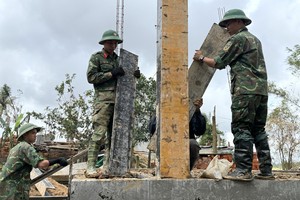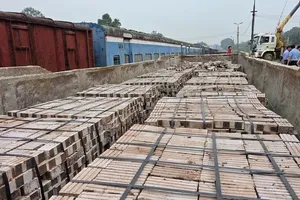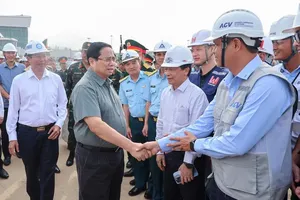
The southeastern region comprises HCMC, Binh Duong, Binh Phuoc, Tay Ninh, Dong Nai and Ba Ria-Vung Tau provinces, locating in the center of the southern key economic zone.
However, state budget investment in the traffic infrastructure system in the region has been inappropriate to promote the region’s potential.
In HCMC, Ben Thanh-Suoi Tien metro line investment capital has far exceeded initial estimates so the work has been awaiting capital allocation from the central government.
In Binh Duong province, Binh Duong Boulevard and streets surrounding Binh Duong new city have been built by Becamex Group under the method of land exchange for infrastructure.
Many stretches of Highway 13, Highway 1K and provincial road 743 are regularly congested but they have not been broadened because of capital shortage. My Phuoc-Tan Van expressway, invested by the province with the total investment capital of VND3.5 trillion, has been overloaded briefly after being opened to traffic because of the fast development of industrial parks.
Mr. Vo Van Luong, Binh Duong People’s Committee Office chief, said that the province has invested in traffic works within its competence to synchronously connect with industrial parks and other provinces and cities in the region.
Railway route comes within the jurisdiction of the Ministry of Transport and the central government, so the province has many times proposed to speed up investment to ease pressure on traffic infrastructure and reduce transport costs. So far the railway construction plan has still been on paper.
Ba Ria-Vung Tau province has long waited for the central government’s capital allocation to start work on a slew of major traffic works, playing the role as a lever for the region’s economic development, such as Bien Hoa-Vung Tau expressway and Trang Bom-Vung Tau railway.
Cai Mep-Thi Vai seaport complex has not received appropriate investment too.
At a national assembly session recently, Mr. Duong Minh Tuan, head of Ba Ria-Vung Tau National Assembly delegation said that Cai Mep-Thi Vai seaport has come into operation since 2009 and contributed over VND90 trillion to the central budget. The port now needs VND84 trillion for upgrading but the central government provides as low as VND5.7 trillion.
Cai Mep-Thi Vai is planned to become an international container transshipment. Nevertheless unconnected traffic system has resulted in high transport cost and caused the port operate at only 20-40 percent of its capacity.
Statistics show that 15 percent of container goods, doing customs procedures in Ba Ria-Vung Tau last year, were transport by road to HCMC and other provinces. The remaining of 85 percent were transported by waterway on barges. This has put a heavy pressure on the road system especially in HCMC.
Mr. Tuan proposed to soon build and improve the traffic system to connect the port and expressways. VND15 trillion investment might help increase the port’s capacity to 80 percent and revenue to VND24 trillion a year.
According to data from HCMC People’s Committee, the city is the largest budget contributor in 63 provinces and cities nationwide. Formerly, the city was permitted to keep 33 percent of its annual revenue. The ratio reduced to 23 percent in 2011-2016 and only 18 percent now.
After deducting regular spending, development investment spending approximates only VND9.5 trillion a year. Of these, the city has to arrange over 28 percent for payment of due loan and interest, about VND2.7 trillion a year. So the city in fact has only VND6.8 trillion left for basic construction including traffic infrastructure, meeting only 15-19 percent of the total need of VND35-40 billion a year.
























